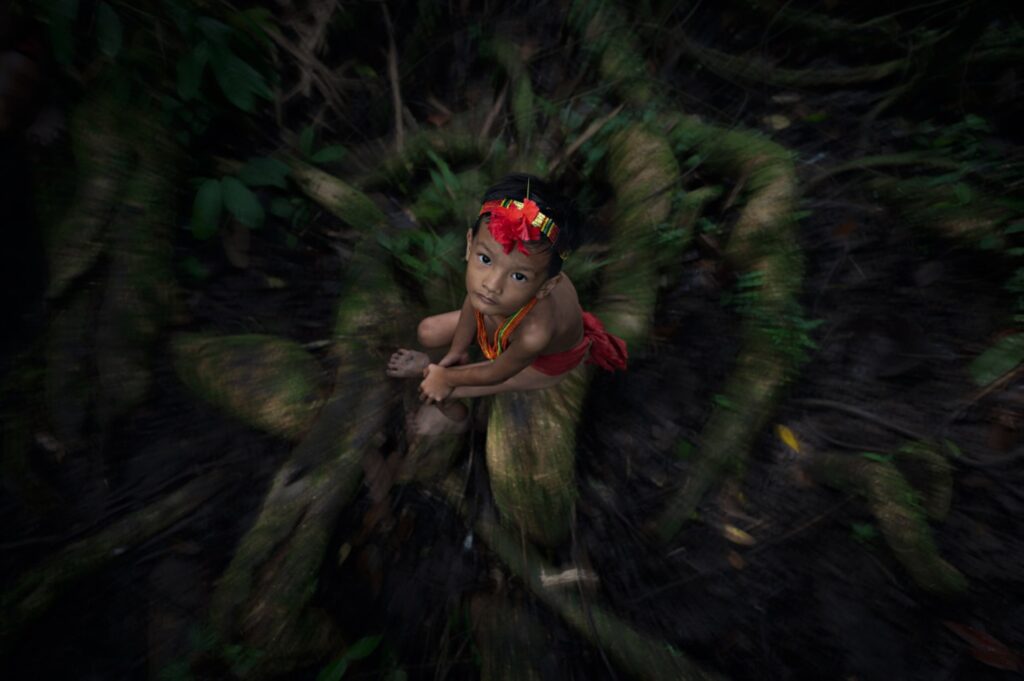Share this
Back in May of 2022, we had an in depth conversation with Nicola Ducati, about his photography, expeditions and experiences, from all over the world.
Since then he has traveled to countless places and documented the people way of life there. One of these places is The Mentawai Islands, a group of islands located off the western coast of Sumatra, Indonesia. They are part of the province of West Sumatra and are situated in the Indian Ocean, roughly 150 kilometers (93 miles) from the mainland. The Mentawai Archipelago consists of four main islands: Siberut, Sipora, North Pagai, and South Pagai, along with numerous smaller islands.

The largest island, Siberut, is also the most well-known and home to the indigenous Mentawai people, who have preserved a traditional lifestyle relatively isolated from modern civilization. Last year Nicola decided to visit and document the Sikerei’s, who are traditional shamans and spiritual leaders of the Mentawai people, the indigenous inhabitants of the Mentawai Islands. The Sikerei hold a significant role in Mentawai society, serving as healers, mediators between the physical and spiritual worlds, and custodians of the tribe’s cultural and spiritual traditions.
The following words are from Nicola’s experience with meeting these indigenous people, from his own journal.

“With this photographic project, shot in the Mentawai Islands, I want to capture the essence of a people who live isolated from the modern world, still maintaining a lifestyle and ancestral traditions dating back to time immemorial. Immersed in a misty primordial forest, the Sikerei represent a model of peaceful existence in harmony and symbiosis with nature, far from the pressures and distractions of modernity.”

“Their turbulent past speaks of colonial domination and indifferent governments that have always made their living conditions difficult. Forced by circumstances to find refuge in remote and isolated lands, their present is now threatened by even more terrible dangers. The energy industry and palm oil multinationals threaten the Sikerei lands with relentless deforestation, while climate change unleashes its fury through extreme cycles of rain and drought. Finally, young people, attracted by the promises of the Western world, dream of abandoning their traditions. All these factors leave deeper and deeper scars and contribute to the fragility of their current situation.”

“In this project, I represent the Sikerei in all their authenticity and beauty, portraying them as static figures, immobile in their time, in a suspended atmosphere delicately illuminated by natural light. These are essential, genuine portraits, embellished with few distinctive elements, telling us of their existence immersed in the nature of which they are children, guests, and guardians. This delicate stillness not only expresses the beauty and dignity of the subjects but also symbolizes their inability to evolve and adapt to a world in constant flux. Modernity and human greed have not spared this corner of the world, and the Sikerei find themselves depicted in a present that seems familiar yet slips out of their grasp.”

“All the works in the series have been modified, leaving the subject intact and inserting motion and blur effects in the background to emphasize the concept of the inexorable transition between the stillness of the present and time that devours all certainty. The forest, which for the Sikerei usually represents a stable and familiar environment, is rendered evanescent and ever-changing, threatening to disappear or become inhospitable. The human figure symbolizes the present in its fleeting beauty, while the natural elements of the background lose sharpness, almost becoming blurred with indistinct outlines. Man forces nature, which shifts from being a refuge to becoming a threat. In observing some shots, we can almost imagine a temporal gap in which the forest decays, and with it, the Sikerei resign themselves to an oblivion with no return.“

“As a travel photographer, my goal is to tell and aesthetically represent unknown peoples and traditions, but also to inspire deep reflection. The power of photography lies in its ability to convey messages and create awareness. The awareness that the fate of these isolated communities foreshadows our own, and that the loss of these traditions could mean a collective loss. Through my work, I intend to emphasize that the fate of peoples like the Sikerei is a problem that directly concerns us and that we must understand our future is shared. If we allow these cultures to disappear, we risk losing something fundamental for ourselves as well.”

“The images in the project reveal the tension between the authenticity and beauty of the Sikerei figures and their changing, vanishing world. This visual contrast not only reflects the devastating impact of modernity and environmental changes but also suggests a deeper reflection on possible cultural extinction through aesthetic metaphor. I hope that these photographs and the accompanying narrative can serve as a powerful reminder of the awareness and necessity of preserving unique traditions and environments as irreplaceable elements for our future.”




